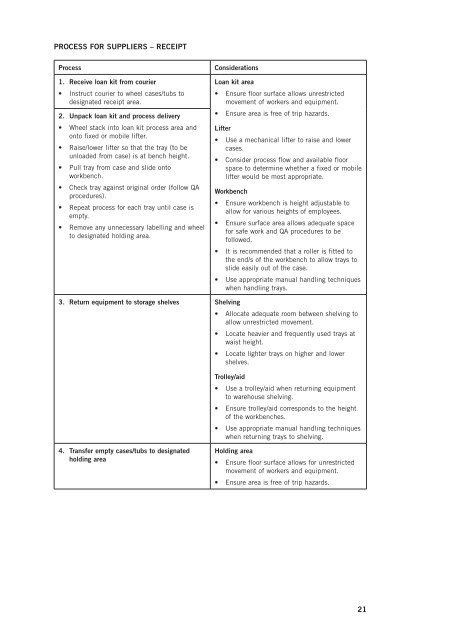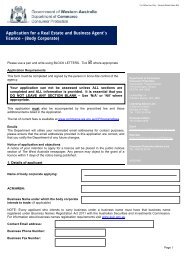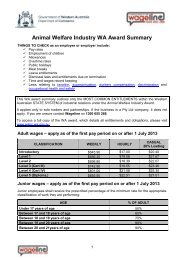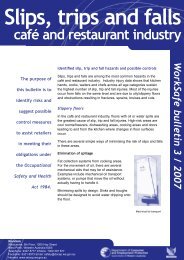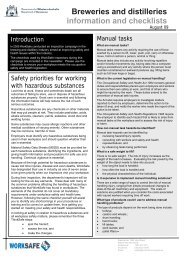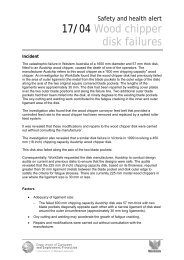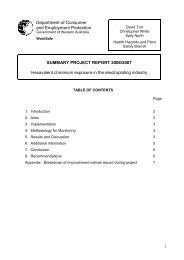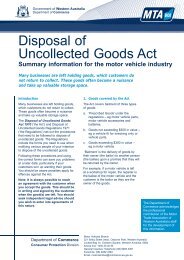Design and handling of surgical instrument transport cases
Design and handling of surgical instrument transport cases
Design and handling of surgical instrument transport cases
Create successful ePaper yourself
Turn your PDF publications into a flip-book with our unique Google optimized e-Paper software.
PROCESS FOR SUPPLIERS – RECEIPT<br />
Process Considerations<br />
1. Receive loan kit from courier<br />
• Instruct courier to wheel <strong>cases</strong>/tubs to<br />
designated receipt area.<br />
2. Unpack loan kit <strong>and</strong> process delivery<br />
• Wheel stack into loan kit process area <strong>and</strong><br />
onto fixed or mobile lifter.<br />
• Raise/lower lifter so that the tray (to be<br />
unloaded from case) is at bench height.<br />
• Pull tray from case <strong>and</strong> slide onto<br />
workbench.<br />
• Check tray against original order (follow QA<br />
procedures).<br />
• Repeat process for each tray until case is<br />
empty.<br />
• Remove any unnecessary labelling <strong>and</strong> wheel<br />
to designated holding area.<br />
Loan kit area<br />
• Ensure floor surface allows unrestricted<br />
movement <strong>of</strong> workers <strong>and</strong> equipment.<br />
• Ensure area is free <strong>of</strong> trip hazards.<br />
Lifter<br />
• Use a mechanical lifter to raise <strong>and</strong> lower<br />
<strong>cases</strong>.<br />
• Consider process flow <strong>and</strong> available floor<br />
space to determine whether a fixed or mobile<br />
lifter would be most appropriate.<br />
Workbench<br />
3. Return equipment to storage shelves Shelving<br />
4. Transfer empty <strong>cases</strong>/tubs to designated<br />
holding area<br />
• Ensure workbench is height adjustable to<br />
allow for various heights <strong>of</strong> employees.<br />
• Ensure surface area allows adequate space<br />
for safe work <strong>and</strong> QA procedures to be<br />
followed.<br />
• It is recommended that a roller is fitted to<br />
the end/s <strong>of</strong> the workbench to allow trays to<br />
slide easily out <strong>of</strong> the case.<br />
• Use appropriate manual h<strong>and</strong>ling techniques<br />
when h<strong>and</strong>ling trays.<br />
• Allocate adequate room between shelving to<br />
allow unrestricted movement.<br />
• Locate heavier <strong>and</strong> frequently used trays at<br />
waist height.<br />
• Locate lighter trays on higher <strong>and</strong> lower<br />
shelves.<br />
Trolley/aid<br />
• Use a trolley/aid when returning equipment<br />
to warehouse shelving.<br />
• Ensure trolley/aid corresponds to the height<br />
<strong>of</strong> the workbenches.<br />
• Use appropriate manual h<strong>and</strong>ling techniques<br />
when returning trays to shelving.<br />
Holding area<br />
• Ensure floor surface allows for unrestricted<br />
movement <strong>of</strong> workers <strong>and</strong> equipment.<br />
• Ensure area is free <strong>of</strong> trip hazards.<br />
21


